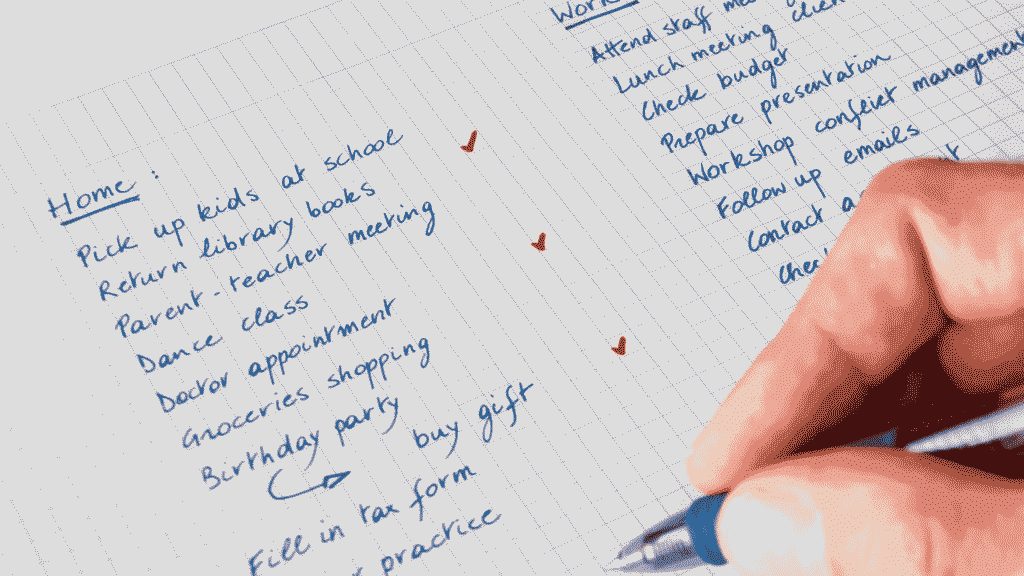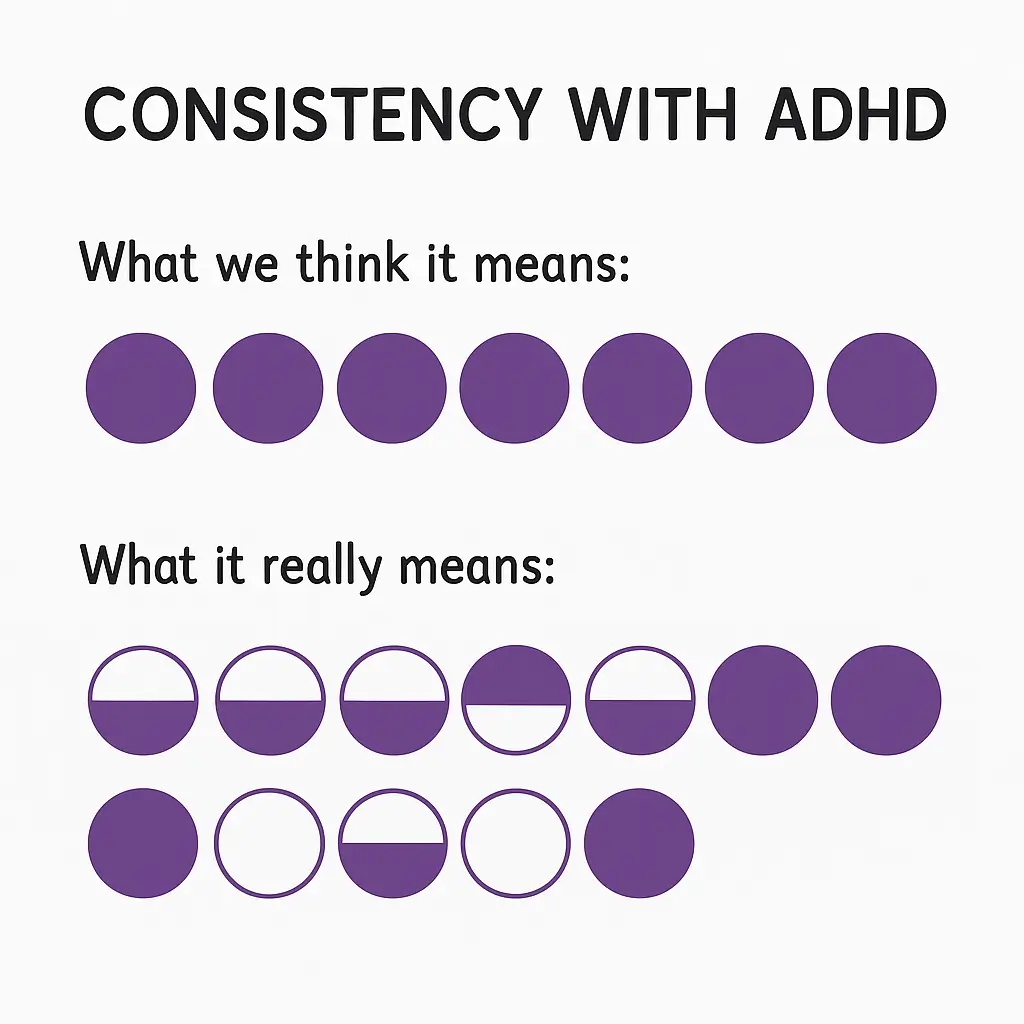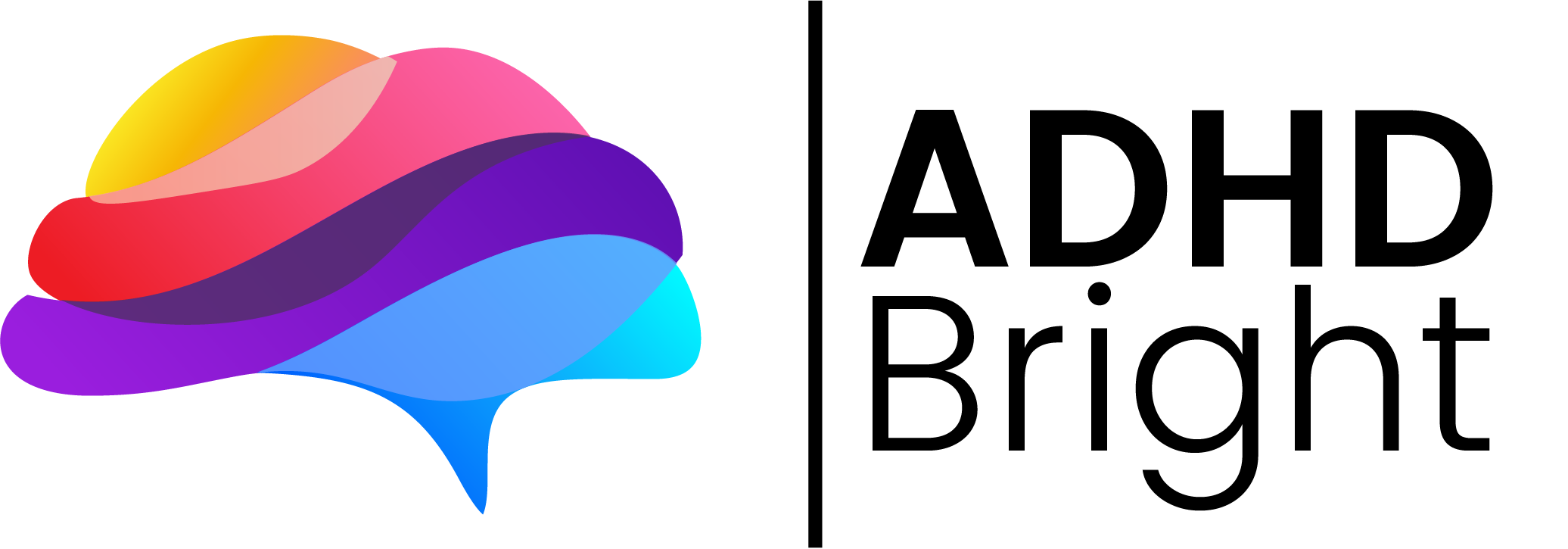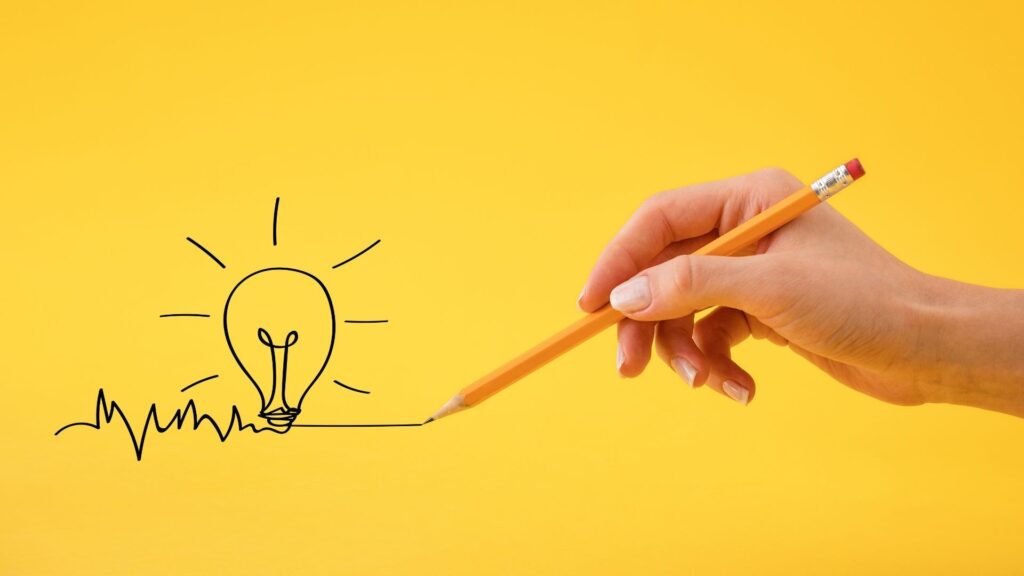If you live with attention deficit hyperactivity disorder (ADHD), you already know that consistency is a challenge. You start a new habit, get excited, keep it up for a few days, and then you’re feeling stuck again.
That’s not a failure—it’s neuroscience. ADHD brains don’t process motivation, time, or rewards the same way neurotypical ones do. But with the right structure, routines, and understanding of how your brain works, you can create consistency that actually sticks.
This blog post explores what science says about how ADHD affects habit formation, and how you can use it to build healthy habits, daily routines, and more consistent progress.
Haven’t read the previous post yet? Start with Part 2: How to Stick With Your Planner — Backed by Neuroscience and Part 1: How to Choose the Best Planner for ADHD.

Habit Loops & Dopamine Rewards
Checking something off a list feels amazing for a reason. It’s not just fun—it’s biochemistry.
ADHD symptoms are tied to lower dopamine activity in the brain’s reward system. This means that long-term goals—like sticking to a six-month plan—don’t provide enough motivation. But short-term rewards do.
When you cross off a task, move a sticky note, or tap “done” in a digital planner, dopamine releases instantly. It’s your brain’s way of saying “Good job, keep going.” Those little wins train your behaviors to repeat automatically. That’s habit formation in action.
Studies show that small, frequent rewards lead to stronger routines and greater overall success than large, delayed ones (Schultz, 2016).
Example: Each time you complete part of your morning routine or check a chore off your schedule, your brain connects that action with satisfaction. Over time, that reward loop builds a reliable rhythm. It’s not about discipline—it’s about dopamine.
Break Down Overwhelm With Task Chunking
Ever open your calendars, see ten upcoming events, and instantly freeze? That’s executive dysfunction at work.
People with attention deficit hyperactivity disorder have more difficulty initiating and organizing tasks (Barkley, 2012). This makes big projects feel like walls you can’t climb.
The right approach is to break large goals into smaller, clearly defined actions. Each small step gives your brain another hit of dopamine, reducing overwhelm and helpful for staying consistent.
Research shows that one strategy—“chunking”—can improve executive functioning and boost task completion by up to 40% (Gollwitzer, 1999).
Example: Instead of writing “clean the house,” write “fold laundry,” “vacuum one room,” or “take out trash.” Each finished task keeps the process moving forward and gives a sense of control.
Externalize Memory — Don’t Rely on Your Brain
Memory is a big struggle in ADHD. Studies show that adults with ADHD have 30–40% less working memory capacity (Martinussen et al., 2005). That’s why remembering upcoming events or multi-step routines feels impossible.
You can’t depend on memory alone—you need external structure.
That’s where visual reminders, sticky notes, alarms, and calendars come in. They act as your “second brain.”
This doesn’t mean you’re disorganized; it means you’re using tools that fit how your mind works.
Each reminder frees up mental energy so you can focus on action instead of remembering every detail.
Example: Keep sticky notes on your bathroom mirror for your new routine, or use recurring reminders for appointments. These visual cues remove guesswork and make staying consistent feel effortless.
Time Blindness and the Visual Clock Effect
One of the most frustrating challenges of ADHD is time blindness—the inability to feel time passing. You plan to start a task at 3:00 PM and suddenly it’s dark outside.
Neuroimaging research (Rubia et al., 2009) shows that ADHD brains under-activate in time perception areas. Without visible cues, the schedule slips away.
To manage this, make time visible. Use color-coded calendars, time-blocked routines, or even analog clocks to train your brain to pay attention to time.
Example: Create a color pattern in your planner for morning, afternoon, and night activities. This visual pattern strengthens your internal sense of timing. It’s helpful for maintaining routines and balancing energy levels across the week.
The benefits go beyond productivity—you’ll feel a greater sense of stability in your life.
Reduce Decision Fatigue
Every small choice drains energy. For those with ADHD, constant decision-making creates difficulty, drains motivation, and leads to mental breaks throughout the day.
Baumeister et al. (1998) found that people who make fewer daily decisions maintain better focus and control.
Pre-made daily routines are your secret weapon. When you know what happens next, your brain saves fuel for what matters. Templates, checklists, and tools remove “What do I do now?” from your day.
Example:
Set your morning steps once—wake, stretch, shower, breakfast.
Use the same schedule every day. This autopilot approach reduces thinking load and helps you stick with a new habit longer.
Emotional Regulation and Journaling
ADHD isn’t just about focus; it’s also about emotions. Up to 60% of adults with attention deficit hyperactivity disorder face emotional ups and downs (Shaw et al., 2014).
When all-or-nothing thinking takes over—“I missed a day, so I failed”—it derails routines fast. But reflection and journaling help break that spiral. Writing engages the prefrontal cortex, improving emotional control and self-awareness (Safren et al., 2010).
Journaling isn’t about perfection; it’s about external accountability. When you write even one line—“I showed up today”—you teach your brain that progress matters more than perfection.
That shift in thinking keeps your momentum alive and your routines consistent.
Forgiveness Over Perfection
Here’s the reality: consistency isn’t doing everything right every day—it’s coming back after you break the streak.
Research on habit formation (Lally et al., 2010) proves that missing a day has zero long-term effect if you restart quickly. The importance is not perfection, but return.
This is where compassion matters. The key to success for ADHDers is to replace guilt with curiosity. Instead of “Why can’t I do this?”, ask “What kind of environment would help me next time?”
Example: Leave blanks visible in your planner instead of erasing them. Each blank box is proof you’re still showing up. That’s how you create consistency—through forgiveness, not punishment.

Final Thoughts
Consistency with ADHD isn’t about forcing perfection; it’s about building routines that support your reality.
You’re not broken—you just need the right approach, backed by science, to stick with your goals. Use dopamine rewards to keep focus, external structure to remember tasks, and forgiving routines that adapt to your energy levels.
Because real consistency isn’t about being flawless.
It’s about showing up again, and again, and again.
Keep Going
Want more strategies for staying consistent and building healthy habits that actually last?
Explore ADHD Bright—a Notion-based planner built to support your routines, manage time blindness, and make staying consistent easier.
References
Volkow et al. (2009); Barkley (2012); Martinussen et al. (2005); Rubia et al. (2009); Baumeister et al. (1998); Gollwitzer (1999); Safren et al. (2010); Shaw et al. (2014); Lally et al. (2010); Schultz (2016).




